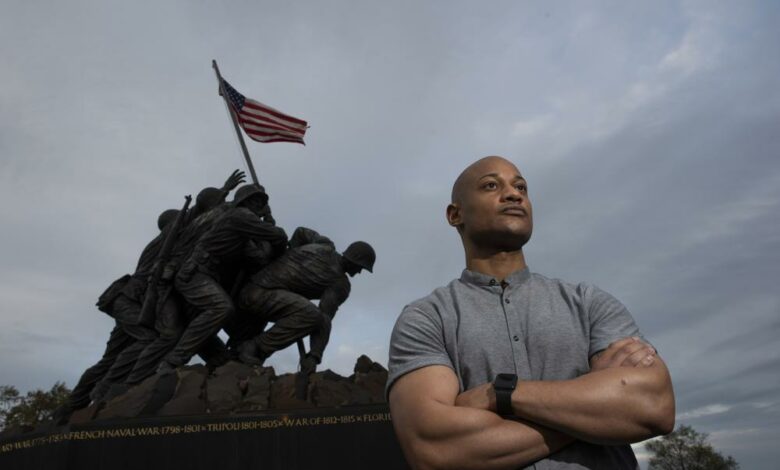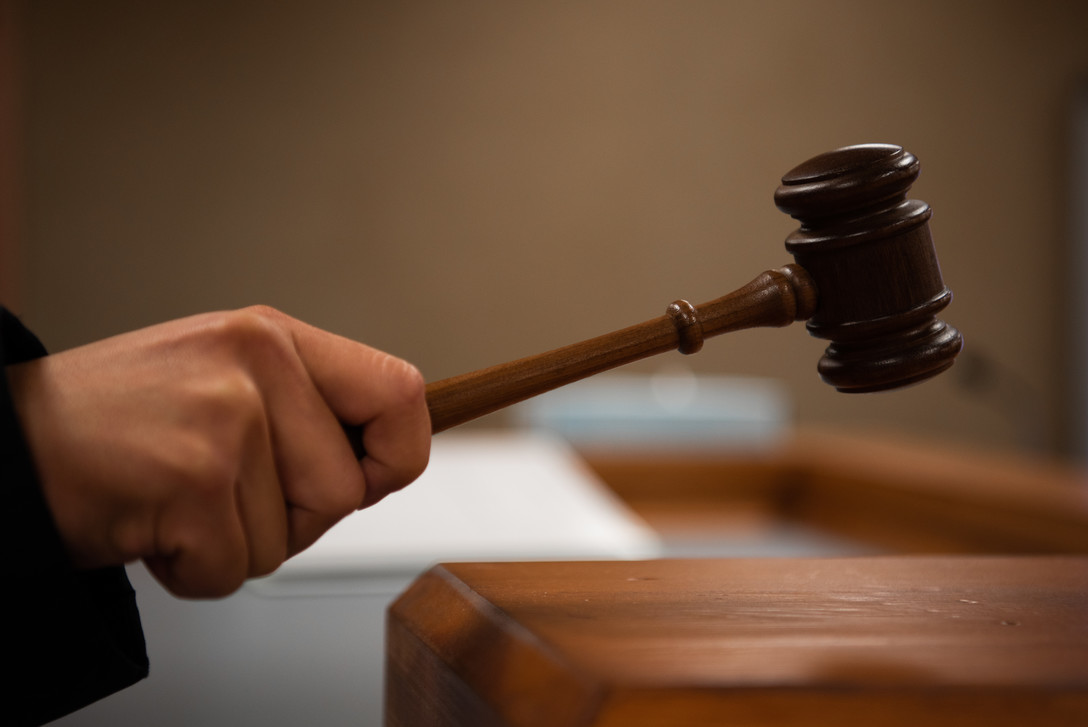
For Stephanie Davis, who grew up with little, the military was a path to the American dream, a realm where everyone would receive equal treatment. She joined the service in 1988 after finishing high school in Thomasville, Georgia, a small town said to be named for a soldier who fought in the War of 1812.
Over the course of decades, she steadily advanced, becoming a flight surgeon, commander of flight medicine at Fairchild Air Force Base and, eventually, a lieutenant colonel.
But many of her service colleagues, Davis says, saw her only as a Black woman. Or for the white resident colleagues who gave her the call sign of ABW – it was a joke, they insisted – an “angry black woman,” a classic racist trope.
White subordinates often refused to salute her or seemed uncomfortable taking orders from her, she says. Some patients refused to call her by her proper rank or even acknowledge her. She was attacked with racial slurs. And during her residency, she was the sole Black resident in a program with no Black faculty, staff or ancillary personnel.
“For Blacks and minorities, when we initially experience racism or discrimination in the military, we feel blindsided,” Davis said. “We’re taught to believe that it’s the one place where everybody has a level playing field and that we can make it to the top with work that’s based on merit.”
In interviews with The Associated Press, current and former enlistees and officers in nearly every branch of the armed services described a deep-rooted culture of racism and discrimination that stubbornly festers, despite repeated efforts to eradicate it.
The AP found that the military’s judicial system has no explicit category for hate crimes, making it difficult to quantify crimes motivated by prejudice.
The Defense Department also has no way to track the number of troops ousted for extremist views, despite its repeated pledges to root them out. More than 20 people linked to the Jan. 6 siege of the U.S. Capitol were found to have military ties.
The AP also found that the Uniform Code of Military Justice does not adequately address discriminatory incidents and that rank-and-file people of color commonly face courts-martial panels made up of all-white service members, which some experts argue can lead to harsher outcomes.
The military said it processed more than 750 complaints of discrimination by race or ethnicity from service members in the fiscal year 2020 alone. But discrimination doesn’t exist just within the military rank-and-file. That same fiscal year, civilians working in the financial, technical and support sectors of the Army, Air Force and Navy also filed 900 complaints of racial discrimination and over 350 complaints of discrimination by skin color, data from the U.S. Equal Employment Opportunity Commission shows.
In February, Lloyd J. Austin III – a former Army general who now is secretary of defense, the first Black man to serve in the post – ordered commanders and supervisors to take an operational pause for one day to discuss extremism in the ranks with their service members.
Austin gave commanders the latitude to address the matter as they saw fit, but emphasized that discussions should include the meaning of their oath, acceptable behaviors both in and out of uniform, and how service members can report actual or suspected extremist behavior through their chains of command.
A recent poll from The Military Times showed the stand-down was received with mixed reviews. Some service members said their units went “above and beyond,” but others reported their trainers made disparaging comments that undercut the discussions and that the sessions were short and non-interactive.
More: AP Investigations
The Southern Poverty Law Center sent Austin a letter shortly after his order, applauding him for his decisive action but underscoring that systemic change on all military levels is urgent.
“Those who are indoctrinated into white supremacist ideology present a significant threat to national security and the safety of our communities,” SPLC President Margaret Huang wrote.
In a statement to the AP, the Defense Department said extremism is not “widespread” in the armed forces, but acknowledged that “efforts to stamp out extremist views from the rank-and-file have historically been reactive versus proactive until recently.” Pentagon spokesman Maj. César Santiago pointed to Austin’s stand-down order in February that stressed the oath of office taken by military personnel, including a “commitment to protecting our nation from enemies foreign and domestic.”
Santiago added that “we know that far too many service members indicate they experience discrimination.” He noted that the Defense Department had launched multiple efforts in the past year, including updating its anti-harassment policy, assessing its training on implicit bias, and developing data-driven strategies to guide efforts to attract and retain diverse members and also identify unhealthy work environments.
When Davis was medically retired by the Air Force in 2019 after more than two decades of service, she felt ground down by overt racism and retaliated against for accusing a superior of sexually assaulting her.
She noted how insidious racism can be to members of the ranks – service members entrust their lives to their fellow troops, and a lack of cohesion in a unit can be deadly.
“It creates a harmful and dangerous work environment,” Davis said. “And a lot of us suffer in silence because we feel like there’s nothing that can be done.”
In the midst of last year’s summer of unrest sparked by police killings of Black Americans across the nation, Army Gen. Mark A. Milley, who is also the Department of Defense’s Chairman of the Joint Chiefs of Staff, told congressional leaders the military cannot afford racism or discrimination.
“We who wear the cloth of our nation understand that cohesion is a force multiplier,” Milley said. “Divisiveness leads to defeat. As one of our famous presidents said, ‘A house divided does not stand.’”
Austin pledged to rid the ranks of “racists and extremists” during his confirmation hearing before Congress, which came on the heels of the Capitol insurrection.
“The job of the Department of Defense is to keep America safe from our enemies,” he said. “But we can’t do that if some of those enemies lie within our own ranks.”
___
It’s standard custom for enlisted personnel to show their respect to higher-ranking colleagues by offering salutes that are held until the gesture is returned.
When Marine Maj. Tyrone Collier was a newly minted second lieutenant and judge advocate, he had a profound experience with that practice. Collier, a Black man, was at Joint Base Myer-Henderson Hall in Virginia when he was saluted by a Black enlisted Marine. But even after Collier acknowledged the gesture, the salute continued. Puzzled, Collier asked why the Marine held it for so long.
“He said, ‘Sir, I just have to come clean with something. … We never see Black officers. We never see people like you and it makes me extraordinarily proud,’” Collier recalled.
“You can imagine what it’s like for a Black enlisted Marine who, for example, might want to consider becoming a warrant officer or a commissioned officer or who served under commander after commander and received so few opportunities to see people that look like them in higher ranks,” Collier said. “Representation really does matter.”
Though that prolonged salute took place in 2010, the racial picture has not improved much since.
At the end of 2020, the Defense Department’s Diversity and Inclusion Board released a report aimed at identifying ways to improve racial and ethnic diversity in the U.S. military.
Among the report’s findings: The enlisted ranks of the active and reserve military were “slightly more racially and ethnically diverse than its U.S. civilian counterparts.” But not the officer corps. Furthermore, it found that the civilian population eligible to become commissioned officers was “less racially and ethnically diverse than the civilian population eligible for enlisted service.”
The breakdown of all active commissioned officers: 73% white; 8% each Black and Hispanic; 6% Asian; 4% multiracial; and less than 1% Native Hawaiian, Pacific Islander, American Indian or Alaska Native. And the diversity gap widened the higher individuals moved up in the ranks.
The report emphasized the increasing importance of the representation of minorities reflecting the nation’s morphing demographics, saying the Defense Department “must ensure that all service members have access to opportunities to succeed and advance into leadership positions.”
Several Black officers interviewed by the AP said the culture must give way if they are ever to flourish.
While serving in Afghanistan, one Marine officer recalled being questioned by a white colleague about why he was conversing with fellow Black officers. “My response to him was ‘I don’t ask you why you’re always hanging out with white officers,’” said the Marine, who asked not to be named because he remains on active duty. “Why can’t they just be officers? Why the qualifier?”
Thomas Hobbs, an infantry colonel who retired after 27 years of service in the Marine Corps in 2018, was among the officers interviewed who spoke of the pressures of trying to blend into an overwhelmingly “white male culture,” while also feeling the need to outperform white officers to negate racial stereotypes.
Hobbs said the Marines have done better than other branches of the service in recruiting Black candidates into the officer corps, but noted that “many of them don’t stay in the military past their 10th year.”
“At the moment, we have more captains than we ever had before,” he said, “but our field grade levels are actually going down. Why don’t they stay in? Because they’re exhausted from having to act a certain way all the time and they can never be themselves.”
The Marine who remains on active duty also called it “exhausting,” adding “not only do you have to deal with your own things but whenever a Black enlisted Marine gets in trouble, they will come to you and say, ‘Oh man, what’s wrong with these guys?’ Coming to you like you’re the expert on everything Black.”
Collier said he felt pressure to act differently from the first moments he was recruited, recalling an encounter at a formal dinner with a Marine major trying to bring him into the service.
“I was one of two Black men who were applying … and he and I were chatting, and the selection officer kind of mentioned to us, ’Hey, you guys might not want to isolate yourselves in this way because it might not look good,’” Collier said. “I mean, this is one of my first experiences involving the Marine Corps and I have a Marine major telling me I can’t talk to another Black person without worrying about how people will look at us if we’re purposely isolating ourselves from the group.”
Other service members of color detailed incidents in which they said they were discouraged by superiors from openly embracing their cultures. Some said they were told to avoid speaking languages other than English to not offend their mostly white colleagues.
Former Air Force Master Sgt. Ricardo Lemos, who was medically discharged in 2019, said a superior once discouraged him from speaking to his mother in Spanish on the phone in the office “because people can’t understand you.”
And some Black women detailed the challenges they faced navigating a culture that often labels them as “aggressive or difficult” and their natural hair as unkempt or unprofessional.
DeMarcus Gilliard, a 34-year-old former Marine captain, told the AP that he felt an unspoken pressure to prove himself better than his peers when he entered the Basic School, where new officers learn the ropes, feeling like a symbol of Black Americans.
But he said he never experienced overt racism there and credits the Marine Corps for making strides toward diversifying its top ranks.
“It’s a great idea, ‘I don’t see color,’ but it actually is pretty dismissive. And I think not talking about issues of race actually exacerbates the problem and we need to be able to talk about these things,” said Gilliard. “I think the Marine Corps would be a great place to do it.”
The Basic School told the AP that sessions on diversity and inclusion are a core part of the training it offers, including “discussions about the negative impact bias has on leadership, decision-making and cohesiveness.”
Last year, Gen. David Berger , who became the top general of the Marine Corps in 2019, used the occasion of the Marine Corps Association’s annual Modern Day Marine expo to drive home the message that diversifying the service will save lives.
“I am absolutely convinced: Too much similarity, too much that we look all the same, think the same, got the same background – we’re going to get killed because we’re going to end up with solutions that we’re all familiar with, but they’re easy to counter,” Berger said.
___
Racism in the ranks is not merely a modern stain. More than a half-century ago in 1971, Frank W. Render, a Black man who was assistant secretary of defense, resigned over what he viewed as unequal treatment of people of color.
That same year, the Defense Department created what is now known as the Defense Equal Opportunity Management Institute – the Pentagon’s premier agency for education and training programs covering diversity and inclusion within the U.S. military.
One of its tools is an anonymous, voluntary “organizational climate” survey that offers a snapshot of a unit’s institutional effectiveness and provides commanders with insight into diversity and inclusion issues within their ranks and how they are addressed.
“Racist, sexual and bigoted jokes are a daily occurrence in my ‘work place,’” a Marine at California’s Camp Pendleton wrote in one December 2017 survey. “Very little has really ever been done to prevent it.” Another Marine said slurs were commonly uttered by officers and enlisted colleagues with no repercussions.
But not everyone is comfortable filling out the surveys or with being honest. Women assigned to Navy SEAL units, for example, fear they can be identified since the surveys break down demographics by gender, rank and race and not many women are assigned to special operation units.
Congress and the Defense Department have mandated that the surveys be conducted annually or whenever a unit changes commanders, but response rates vary widely across units, the surveys do not fall under the Federal Records Act and they are destroyed after three years.
Using multiple Freedom of Information Act requests, the AP managed to collect surveys for the past four years, concentrating on the eleven aircraft carriers in the U.S. Navy fleet due to their large population size, which can mimic a small floating city with more than 5,000 personnel.
In surveys collected from 2017, 265 sailors from the USS Abraham Lincoln, the USS George Washington, the USS John C. Stennis, the USS Nimitz and the USS Dwight D. Eisenhower said they personally experienced racial discrimination. But in the fall of that year, the discrimination question softened, moving from pointed inquiries to broadly asking whether discrimination “does not occur.”
Since that change, in 2019, the latest complete year obtained by AP, more than 1,600 sailors – or 1 in 5 – disagreed, saying racial discrimination did take place on their ships, with nearly a third reporting racial jokes, comments or slurs. Nearly 1 in 4 sailors said they could not use their chain of command to report incidents without fear of retaliation or reprisal, and 4 out of every 10 said discipline is unfairly administered.
Out of the 11 aircraft carriers, the George Washington, John C. Stennis and Abraham Lincoln performed worst when sailors were asked about racial discrimination and whether they could safely report harassment. In 2019 on the George Washington, for instance, 30% of sailors said unequal treatment occurred based on race, color or national origin.
The AP’s request to interview a representative of the Defense Equal Opportunity Management Institute was referred to the Pentagon, which did not provide anyone with knowledge of the workings of the command climate surveys.
In a statement, the Navy called diversity a “key component to maintaining our highest state of readiness,” adding that “certainly our military is better served when it reflects the nation it serves and all of its members are treated with dignity and respect.”
___
As a young airman, Nick Shands didn’t initially think much of it when he received a request to report to the medical treatment facility on Mountain Home Air Force Base. But when he arrived, he thought it was strange that he saw only a handful of superiors and a large dumpster. His task: Climb in and sift through the garbage for documents containing personally identifiable information.
Shands, one of the few Black airmen on the Idaho base, was stunned by the order but clambered over the side for what turned out to be a nearly all-day task, as his superiors watched him search fruitlessly.
He said it was just one incident among several on the nearly all-white base where he felt singled out, including being told repeatedly that he wasn’t “built” for the military.
“If it was for the purpose of to embarrass and to mentally break you, I guess that’s what they tried to do,” he said.
Shands said targeted racism and discrimination continued after he left Idaho and served on different bases, leading him to depart the military in 2018. He believes a tough road lies ahead for the Defense Department and Congress, which provides oversight, to address structural racism in the military and prevent other service members from suffering as he did.
But a round of sweeping changes to the National Defense Authorization Act – which primarily funds and lays out policies governing the Defense Department and military services – could present a unique opportunity to begin to turn the tide toward systemic change.
A bill that was passed earlier this year ordered the Secretary of Defense to devise a plan to remove all names, symbols, displays and monuments that honor the Confederacy, including the renaming of military bases such as Fort Benning and Fort Hood that honor Confederate leaders.
“Several years ago, they uncovered a cell of white supremacists down at Fort Bragg,” U.S. House Majority Whip Jim Clyburn recalled in an interview with the AP. “Were they there because of the attitudes they brought with them or were they celebrating the fact that Fort Bragg is named after a segregationist?
“That’s one reason those of us here in Congress feel that we need to get rid of all of the institutionalization and the celebration of these racist attitudes,” Clyburn said.
Buried deep within the more than 1,400-page bill are mechanisms aimed at transforming the way the military addresses racism and extremism from within. It lays out tracking and reporting requirements for supremacist, extremist and criminal gang activity, and creates an inspector general to oversee diversity and inclusion efforts.
And it says the military must add questions to its climate surveys that explicitly ask about racism, antisemitism and supremacism.
In addition, Shands believes the military – like the nation it is sworn to protect – also needs to do some deep soul-searching.
Though he has moved on with his life, he carries humiliation and pain that he cannot erase.
Still, he will always cherish aspects of his military career. As a public health instructor with the USAF School of Aerospace Medicine, he had a direct impact on students eager to make a change in the world. He also met his wife in the military.
After the police killing of George Floyd in Minneapolis sparked protests that swept the globe, Shands finally confronted one of his former superiors – a white woman involved with the dumpster task more than a decade ago.
After the woman posted in a private military Facebook group that “Black Lives Matter,” Shands reached out to remind her of the incident, telling her he hoped it didn’t take the “murders of Black humans” to awaken her to the discrimination and racism that exists in both America and the Air Force – including the discrimination she exerted upon him.
The woman acknowledged she did not treat Shands well and had been “incredibly ignorant to acknowledging and/or recognizing many things, including systemic racism and the presence of it in the Air Force,” according to the screenshots reviewed by the AP.
For Shands, the conversation was cathartic, as others chimed in to offer support. But it also brought home the dualities facing Black Americans and other people of color, inside and out of the military, who are trying to navigate a nation riddled by racism.
“You’re not going to escape racism anywhere in this country,” he said. “The best interpretation I’ve ever heard of being in the military, especially a minority or a person of color in the military, is that the military is a microcosm of regular society.”
___
EDITOR’S NOTE: As a Marine lance corporal, James LaPorta once served under the command of Col. Thomas Hobbs, but did not work for him directly.
___
Contact AP’s global investigative team at [email protected] or https://www.ap.org/tips/




